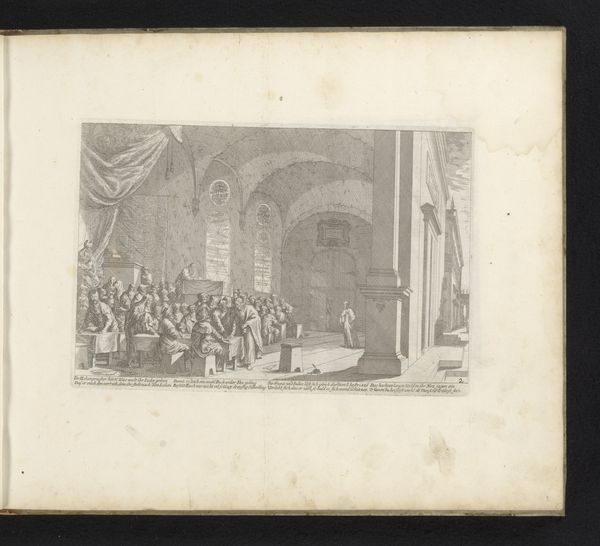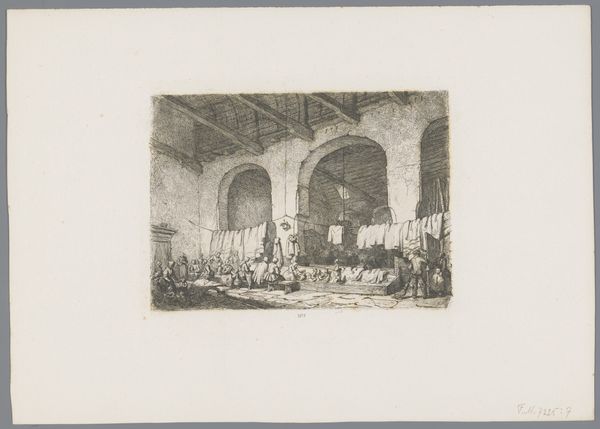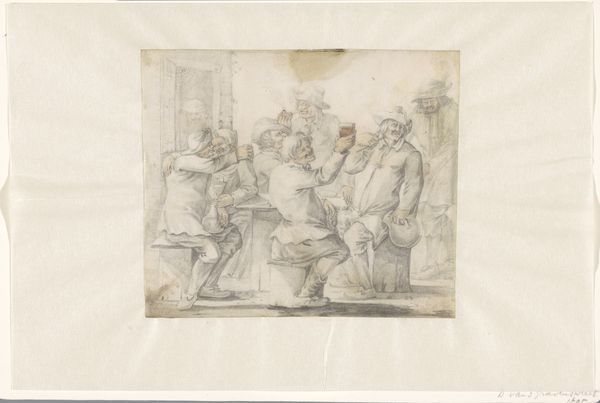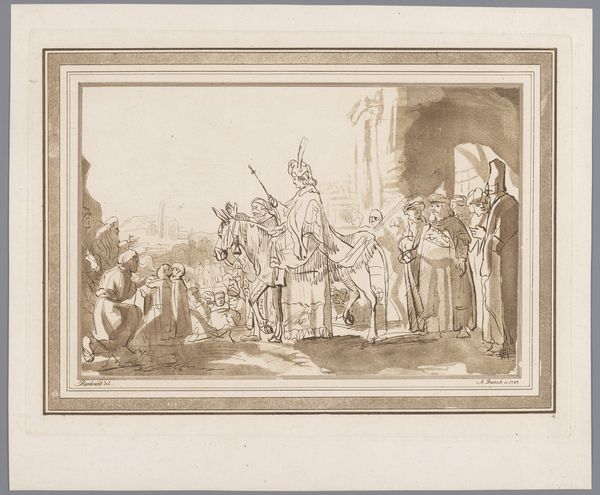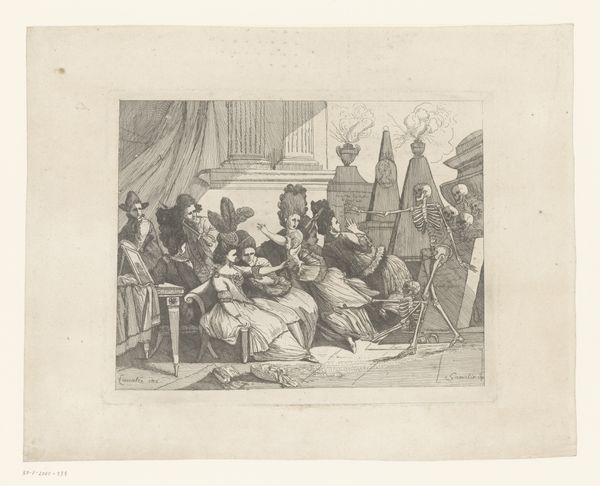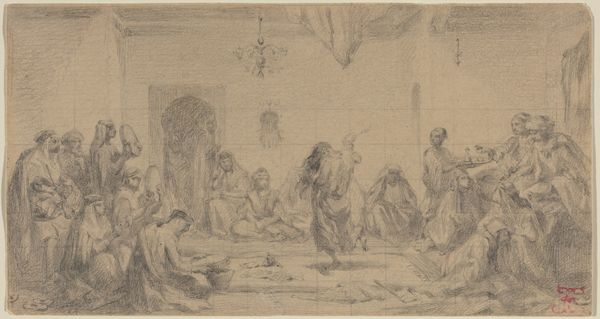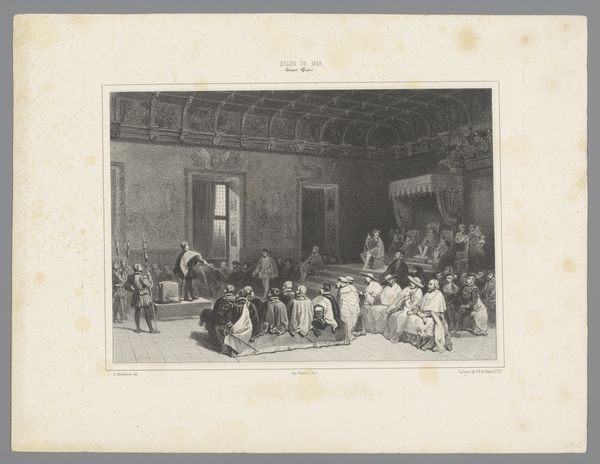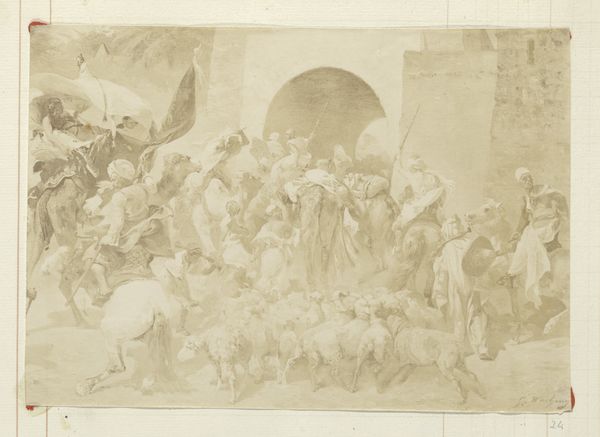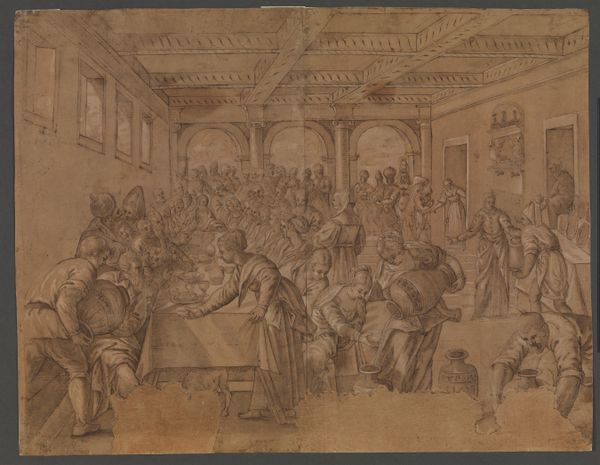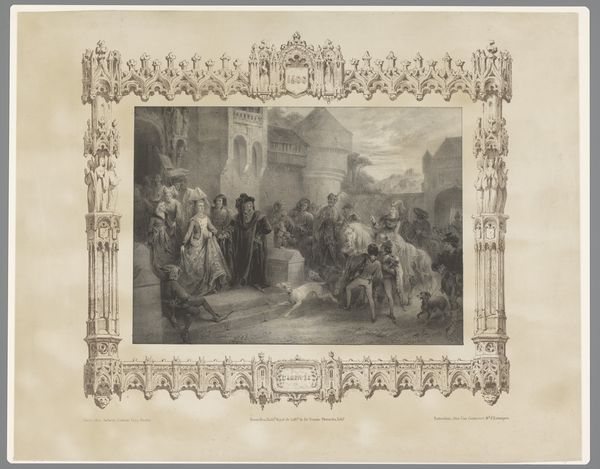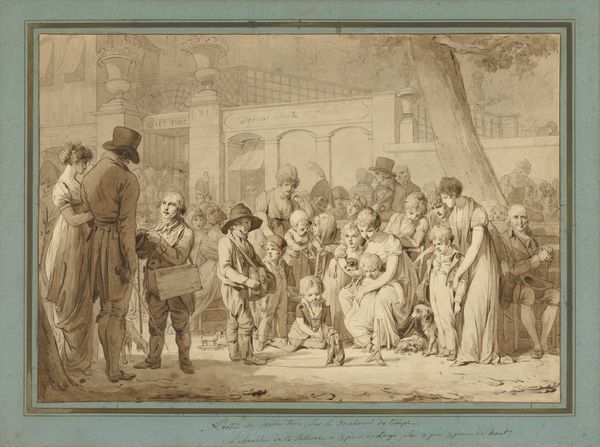
Fotoreproductie van een gravure van De Raad der Beroerten ofwel de Bloedraad, door de hertog van Alva in september 1567 ingesteld 1850 - 1900
0:00
0:00
anonymous
Rijksmuseum
drawing, print, ink, pencil, engraving
#
drawing
#
narrative-art
# print
#
ink
#
pencil
#
history-painting
#
engraving
Dimensions: height 61 mm, width 79 mm, height 63 mm, width 106 mm
Copyright: Rijks Museum: Open Domain
Curator: What strikes you most about this image? To me it has an almost spectral feel, all muted tones. Editor: I agree, a ghostly air pervades. It feels secretive, a gathering cloaked in shadows and muted light. Curator: It’s a photo reproduction of an engraving, dating from the late 19th century. The subject depicts the Council of Troubles, or “Blood Council,” established by the Duke of Alva in 1567. Editor: Blood Council? That doesn’t sound promising. Looking at the composition, I wonder about the political narrative it conveys and its historical representation. Curator: Certainly not! This council was notorious for its brutal repression of dissent in the Netherlands under Spanish rule. This anonymous work on display at the Rijksmuseum done in pencil, ink, and engraving. The choice of such readily available materials makes me consider who this piece was trying to reach. Was this trying to disseminate this history widely? Editor: That's a good question. And considering the historical context, was this trying to solidify sentiments among common people or influence the ruling elite? Perhaps mass production through printmaking played a part in shaping political sentiment or fueling resistance against oppressive regimes, especially if drawing from familiar imagery. Curator: It certainly lends itself to easy dissemination. Note how the Duke of Alva looms large. I see a stark division of space and figures between those with him and those being presented to him as if in judgment. Editor: It seems the intention was clearly to emphasize power dynamics at play through this stark division and size contrast in portraying Alva. The details are fascinating and speak to much deeper meanings of dominance in the time that this piece was made and the depicted historical events that transpired. Curator: Indeed, a potent reminder of the socio-political forces at work in shaping historical narratives through artistic production. Editor: Yes, and the continuous life it's taken through reproduction and reinterpretation throughout different points in time as we reanalyze it here today.
Comments
No comments
Be the first to comment and join the conversation on the ultimate creative platform.
